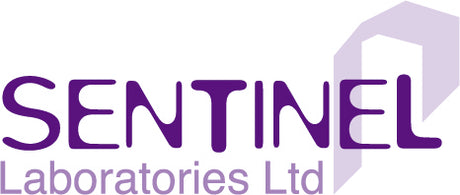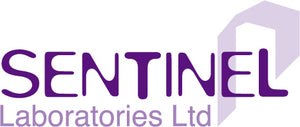PPE Pictograms Explained























Industry Standards Symbols
Click on a Pictogram for an Explanation.

- Scope:
- Conformity:
- Assessment:
- Documentation:
- Labelling:
- Transition:
- Responsibility:
The UKCA (UK Conformity Assessed) marking is a certification mark that indicates conformity with health, safety, and environmental protection standards for products sold within the United Kingdom. It came into effect on January 1, 2021, after the UK left the European Union. Here's what you need to know about the UKCA marking specifically for PPE gloves
The UKCA marking applies to goods placed on the market in Great Britain (England, Wales, and Scotland). It does not apply to Northern Ireland, which follows the EU’s CE marking system under the Northern Ireland Protocol.
PPE gloves must meet the regulatory requirements as set out in the UK’s PPE Regulations 2018, which are based on the EU’s PPE Regulation (EU) 2016/425 that the UK previously followed. This includes design and manufacturing standards to ensure safety and performance.
PPE gloves, depending on the category, may require assessment by a UK-approved body. This is similar to the role previously played by EU Notified Bodies. The assessment process includes examining the technical design of the gloves to ensure it complies with the relevant standards.
Manufacturers must have technical documentation that demonstrates conformity with the relevant UK legislation. They must draw up a UK Declaration of Conformity, which is a document that declares the gloves meet all legal requirements.
Once the PPE gloves have been confirmed to meet the standards, the UKCA marking must be affixed to the gloves or the packaging. The marking should be visible, legible, and permanent.
There was a transition period during which the CE marking was still recognized in the UK to allow businesses to adjust. After the transition period, only PPE gloves with the UKCA marking are recognized as compliant for the UK market (unless they are for the Northern Ireland market).
It is the responsibility of the manufacturer to ensure that PPE gloves are correctly assessed and marked. If the manufacturer is not based in the UK, an authorized representative or importer must ensure the PPE gloves comply with the UKCA requirements.


- Scope
- Definition
- Requirements
This standard defines the general requirements for glove design and construction, innocuousness, comfort and efficiency, marking and information applicable to all protective gloves. This standard can also apply to arm guards. The key points are given below. Some gloves designed for very specialist applications, such as electrician's or surgical gloves are governed by other stringent job-specific standards.
A glove is an item of personal protective equipment which protects the hand or any part of the hand from hazards. It may also cover part of the forearm and arm. A performance level is a number (between 0 and 4) which shows how a glove has performed in a specific test, and by which the results of that testing may be graded. Level 0 indicates that the glove is either untested or falls below the minimum performance level. A performance level X means that the test method is not suitable for the glove sample. Higher numbers indicate higher levels of performance.
Glove Construction and Design
Gloves have to offer the greatest possible degree of protection in the foreseeable conditions of end use
When seams are included, the strength of these seams should not reduce the overall performance of the glove.
Innocuousness
The gloves themselves shouldn't cause any harm to the user.
pH of the glove should be between 3.5 and 9.5.
Chromium (VI) content should be below detection (< 3 ppm).
Natural rubber gloves shall be tested on extractable proteins as per EN 455-3.
Cleaning Instructions
If care instructions are provided, the levels of performance should not be reduced after the maximum recommended number of cleaning cycles.
Electrostatic Properties
Anti-static gloves that are designed to reduce the risk of electrostatic discharges shall be tested as per EN 1149.
Obtained test values are to be reported on the instructions for use.
An electrostatic pictogram shall NOT be used.
Sizing
Gloves that are below the minimum length are to be called 'Fit for Special Purpose.'
Dexterity
If required, performance to be graded as per the table below.
Water Vapour Transmission and Absorption
If required, gloves shall allow water vapour transmission (5mg/cm2.h).
If gloves exclude water vapour transmission, it should be at least 8 mg/cm2 for 8 hours.
Marking and Information
Each glove should be marked with:
Name of manufacturer
Glove and size designation
CE / UKCA mark
Appropriate pictograms accompanied by the relevant performance levels and the reference of the EN standard
The marking should be legible throughout the life of the glove. Where marking of the glove is not possible in view of the characteristics of the glove, it should be mentioned on the first packaging enclosure.
Marking of the packaging immediately containing the gloves
Name and address of the manufacturer or representative
Glove and size designation
CE Mark
Usage Info:
- simple design: 'For minimal risks only' or,
- intermediate design or complex design: relevant pictograms
When protection is limited to part of the hand, this shall be mentioned (e.g. 'Palm Protection style only').
Reference to where information can be obtained
Instructions for Use (to be supplied when the glove is placed on the market)
Name and address of the manufacturer or representative
Glove designation
Size range available
CE / UKCA mark
Care & storage instructions
Instructions and limitations of use
A list of substances used in the glove which are known to cause allergies
A list of all substances in the glove shall be made available upon request
Name and address of notified body that certified the product
Sizing of Gloves
| Glove Size | Fits Hand Size | Hand Circumference/Length (mm) | Minimum Length of the Glove (mm) |
| 6 | 6 | 152/160 | 220 |
| 7 | 7 | 178/171 | 230 |
| 8 | 8 | 203/182 | 240 |
| 9 | 9 | 229/192 | 250 |
| 10 | 10 | 254/204 | 260 |
| 11 | 11 | 279/215 | 270 |
Glove Dexterity
| Performance Level | Smallest Diameter* |
| 1 | 11.0 |
| 2 | 9.5 |
| 3 | 8.0 |
| 4 | 6.5 |
| 5 | 5.0 |
Glove Sizing Chart
Ordering the right size is the best way to assure that gloves are comfortable. One way to determine the size needed is to use a dressmaker's cloth tape to measure around the hand. Measure above the thumb and below the fingers. The circumference of the hand (rounded to the nearest half inch; 1 inch = 2.54cm) is numerically equal to the worker's average glove size.
Measuring the hands in this way will not account for all possible variations in hand size. Some workers, for example, may have long fingers, while others will have short fingers. Workers may find gloves that are one-half or even a full size larger or smaller than the measured hand size fit more comfortably.
| Size # | XS | S | M | L | XL | XXL |
| Size | 6 | 7 | 8 | 9 | 10 | 11 |

Scope
This standard specifies the capability of gloves to protect the user against chemicals and/or micro-organisms.Definitions
Penetration
Penetration is the movement of a chemical and/or micro-organism through porous materials, seams, pinholes or other imperfections in a protective glove material at a non-molecular level.Permeation
The rubber and plastic films in gloves do not always act as barriers to liquids. Sometimes they can act as sponges, soaking up the liquids and holding them against the skin. It is therefore necessary to measure breakthrough times, or the time taken for the hazardous liquid to come in contact with the skin.Requirements
• The minimum liquid proof section of the glove shall be at least equal to the minimum length of the gloves specified in EN 420.• Penetration: A glove shall not leak when tested to an air and/or water leak test, and shall be tested and inspected in compliance with the Acceptable Quality Level.
| Performance Level | Acceptable Quality Level Unit | Inspection Levels |
| Level 3 | < 0.65 | G1 |
| Level 2 | < 1.5 | G1 |
| Level 1 | < 4.0 | S4 |

EN 374 Chemical Hazards
The 'chemical resistant' glove pictogram must be accompanied by a 3-digit code. This code refers to the code letters of the chemicals (from a list of 12 standard defined chemicals), for which a breakthrough time of at least 30 minutes has been obtained.| Code Letter | Chemical | CAS Number | Class |
| A | Methanol | 67-56-1 | Primary Alcohol |
| B | Acetone | 67-64-1 | Ketone |
| C | Acetonitrile | 75-05-8 | Nitrile compound |
| D | Dichloromethane | 75-09-2 | Chlorinated paraffin |
| E | Carbon disulphide | 75-15-0 | Sulphur containing organic compound |
| F | Toluene | 108-88-3 | Aromatic hydrocarbon |
| G | Diethylamine | 109-89-7 | Amine |
| H | Tetrahydrofurane | 109-99-9 | Heterocyclic and ether compound |
| I | Ethyl acetate | 141-78-6 | Ester |
| J | n-Heptane | 142-85-5 | Saturated hydrocarbon |
| K | Sodium hydroxide 40% | 1310-73-2 | Inorganic base |
| L | Sulphuric acid 96% | 7664-93-9 | Inorganic mineral acid |
Permeation
Each chemical tested is classified in terms of breakthrough time (performance level 0 to 6).| Measured Breakthrough Time | Protection Index | Measured Breakthrough Time | Protection Index |
| > 10 minutes | class 1 | > 120 minutes | class 4 |
| > 30 minutes | class 2 | > 240 minutes | class 5 |
| > 60 minutes | class 3 | > 480 minutes | class 6 |
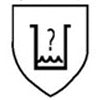
EN 374-3
The ‘low chemical resistant’ or ‘waterproof ’ glove pictogram is to be used for those gloves that do not achieve a breakthrough time of at least 30 minutes against at least three chemicals from the defined list, but which comply with the penetration test.
EN 374 Micro-Organism Hazards
The ‘micro-organism’ pictogram is to be used when the glove conforms to at least a performance level 2 for the penetration test.Information taken from 'A revised guide to EN standards for gloves' written by Ansell, 2011.

Scope
This standard applies to all kinds of protective gloves in respect of physical and mechanical aggressions caused by abrasion, blade cut, puncture and tearing.Definition and Requirements
Protection against mechanical hazards is expressed by a pictogram followed by four numbers (performance levels), each representing test performance against a specific hazard.
EN 388 Mechanical Hazards
The 'mechanical risks' pictogram is accompanied by a 4-digit code.a. Resistance to Abrasion
Based on the number of cycles required to abrade through the sample glove.
b. Blade Cut Resistance
Based on the number of cycles required to cut through the sample at a constant speed.
c. Tear Resistance
Based on the amount of force required to tear the sample.
d. Puncture Resistance
Based on the amount of force required to pierce the sample with a standard-sized point.
In all cases, (0) indicates the lowest level of performace, as follows:
Test/Performance Level Rating
| 0 | 1 | 2 | 3 | 4 | 5 | |
| a. Abrasion resistance (cycles) | <100 | 100 | 500 | 2,000 | 8,000 | |
| b. Blade cut resistance (factor) | <1.2 | 1.2 | 2.5 | 5.0 | 10.0 | 20.0 |
| c. Tear resistance (newton) | <10 | 10 | 25 | 50 | 75 | |
| d. Puncture resistance (newton) | <20 | 20 | 60 | 100 | 150 |
These performance levels must be prominently displayed alongside the pictogram on the gloves and on the packaging which immediately contains the gloves.
Information taken from 'A revised guide to EN standards for gloves' written by Ansell, 2011.

Scope
This standard specifies thermal performance for protective gloves against heat and/or fire.Definition and Requirements
The nature and degree of protection is shown by a pictogram followed by a series of six performance levels, relating to specific protective qualities.
Standard EN 407: 2004
The 'heat and flame' pictogram is accompanied by a 6-digit number:a. Resistance to Flammability (performance level 0-4)
Based on the length of time the material continues to burn and glow after the source of ignition is removed. The seams of the glove shall not come apart after an ignition time of 15 seconds.
b. Contact Heat Resistance (performance level 0-4)
Based on the temperature range (100-500°C) at which the user will feel no pain for at least 15 seconds. If an EN level 3 or higher is obtained, the product shall record at least EN level 3 in the flammability test. Otherwise, the maximum contact heat level shall be reported as level 2.
c. Convective Heat Resistance (performance level 0-4)
Based on the length of time the glove is able to delay the transfer of heat from a flame. A level of performance shall only be mentioned if a performance level 3 or 4 is obtained in the flammability test.
d. Radiant Heat Resistance (performance level 0-4)
Based on the length of time the glove is able to delay the transfer of heat when exposed to a radiant heat source. A performance level shall only be mentioned if a performance level 3 or 4 is obtained in the flammability test.
e. Resistance to Small Splashes of Molten Metal (performance level 0-4)
The number of molten metal drops required to heat the glove sample to a given level. A performance level shall only be mentioned if a performance level 3 or 4 is obtained in the flammability test.
f. Resistance to Large Quantities of Molten Metal (performance level 0-4)
The weight of molten metal required to cause smoothing or pinholing across a simulated skin placed directly behind the glove sample. The test is failed if metal droplets remain stuck to the glove material or if the specimen ignites.
Gloves must achieve at least performance level 1 for abrasion and tear.
Information taken from 'A revised guide to EN standards for gloves' written by Ansell, 2011.

Scope
This standard applies to any gloves to protect the hands against convective and contact cold down to -50°C.Definition and Requirements
Protection against cold is expressed by a pictogram followed by a series of 3 performance levels, relating to specific protective qualities.
Standard EN 511: 2006
The 'cold hazard' pictogram is accompanied by a 3-digit number:a. Resistance to Convective Cold (performance level 0-4)
Based on the thermal insulation properties of the glove which are obtained by measuring the transfer of cold via convection.
b. Resistance to Contact Cold (performance level 0-4)
Based on the thermal resistance of the glove material when exposed to contact with a cold object.
c. Penetration by Water (0 or 1)
0 = water penetration
1 = no water penetration
Information taken from 'A revised guide to EN standards for gloves' written by Ansell, 2011.

Scope
This standard applies to gloves to protect from ionising radiation and radioactive contamination.Definition and Requirements
The nature of protection is shown by a pictogram relating to the specific protective qualities.
Protection from Radioactive Contamination
To protect from radioactive contamination, the glove has to be liquid proof and needs to pass the penetration test defined in Gloves.• For gloves used in containment enclosures, the glove shall pass in addition to a specific air pressure leak test.
• Materials may be modelled by their behaviour to ozone cracking. This test is optional and can be used as an aid to selecting gloves.

Protection from Ionising Radiation
To protect from ionising radiation, the glove has to contain a certain amount of lead or equivalent metal, quoted as lead equivalence. This lead equivalence must be marked on each glove.
Scope
This standard specifies the requirements and test methods for materials used in the manufacturing of electrostatic dissipative protective clothing (gloves) to avoid electrostatic discharges.Definition and Requirements
As per EN 420:2003, it is defined that the electrostatic properties shall be tested as per the test methods described in EN 1149.1. EN 1149 - Part 1 defines the test to measure surface resistivity/resistance (ohm) = resistance in ohm along the surface of the material, between two specified electrodes (resting on the test specimen and a potential of 100±5V.
2. EN 1149 - Part 2 defines the test to measure vertical resistance (ohm) = resistance in ohm through a material, between two electrodes placed on opposite surfaces of the test specimen and a potential of 100±5V.
3. EN 1149 - Part 3 defines the test to measure the half decay time T50 (s) = the time it takes for a material to achieve a 50% decay of a charge induced on the material via an electrode.
4. EN 1149 - Part 5 defines the criteria to claim antistaticity for gloves:
• Surface resistance < 2.5x109 (ohm) (or Surface resistivity < 5x1010 (ohm) OR
• Charge decay time T50 < 4s
• For vertical resistance (ohm), there are no set criteria defined.
As per the EN 420 standard, no anti-static pictogram shall be used.

Scope
This standard applies to protective gloves for use in manual metalwelding, cutting and allied processes.
Requirements
EN 12477: Protection gloves for weldersStandard for manual metal welding
Compliance to EN 420 except for lengths:
Size 6: 300mm
Size 7: 310mm
Size 8: 320mm
Size 9: 330mm
Size 10: 340mm
Size 11: 350mm
| Requirements (EN levels) | Type A | Type B (High Dexterity, Tig Welding) |
| Abrasion | 2 | 1 |
| Cut | 1 | 1 |
| Tear | 2 | 1 |
| Puncture | 2 | 1 |
| Burning behaviour | 3 | 2 |
| Contact heat | 1 | 1 |
| Convective heat | 2 | -- |
| Small splashes | 3 | 2 |
| Dexterity | 1 | 4 |
Type B gloves are recommended when high dexterity is required as for TIG welding, while Type A gloves are recommended for other welding processes.
Type A or B to be marked on the product, its packaging and in the instructions for use.
Information taken from 'A revised guide to EN standards for gloves' written by Ansell, 2011.

Registration, Evaluation, Authorisation and Restrictions of Chemicals
A second pillar of the REACH legislation is the notification of substances of very high concern (SVHC), i.e. chemicals with indications of impact on the environment and/or health. In October 2008, REACH published its first Candidate List with such SVHC chemicals which has been amended in January 2010 and June 2010 and December 2010. Companies now have the obligation to inform everyone involved in their supply chain if they use any of the Candidate List substances in concentrations over 0.1% w/w within their articles (e.g. gloves) or within preparations. Companies can continue to use these SVHCs up to a certain date that still need to be defined by the European Commission and then, only if application is made to the ECHA for 'Authorization for continued use of the SVHC', companies can continue to use them after that date.
Information taken from 'A revised guide to EN standards for gloves' written by Ansell, 2011.

ACCEPTABLE QUALITY LEVEL

Some elements of the product and/or packaging are recyclable.

This symbol indicates that an object is capable of being recycled - not that the object has been recycled.


A device designated as 'single-use' must not be reused. It should only be used once and then discarded. It is not intended to be reprocessed and used again.

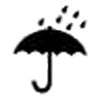
This pictogram indicates that you should store the product in a cool, dry place.

Keep away from direct sunlight or fluorescent light

This pictogram indicates that you should keep products away from direct sunlight or fluorescent light.

Temperature

This pictogram indicates that you should store at your product at temperatures no less than 5°C and no more than 25°C.

Powder Free Product

This pictogram indicates that the product is powder free.

Latex Free Product


Product Contains Latex
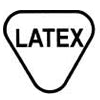

Product Contains Powder


Product can be used within the food industry

according to the European Regulation 1935-2004.

Product found in the food industry

